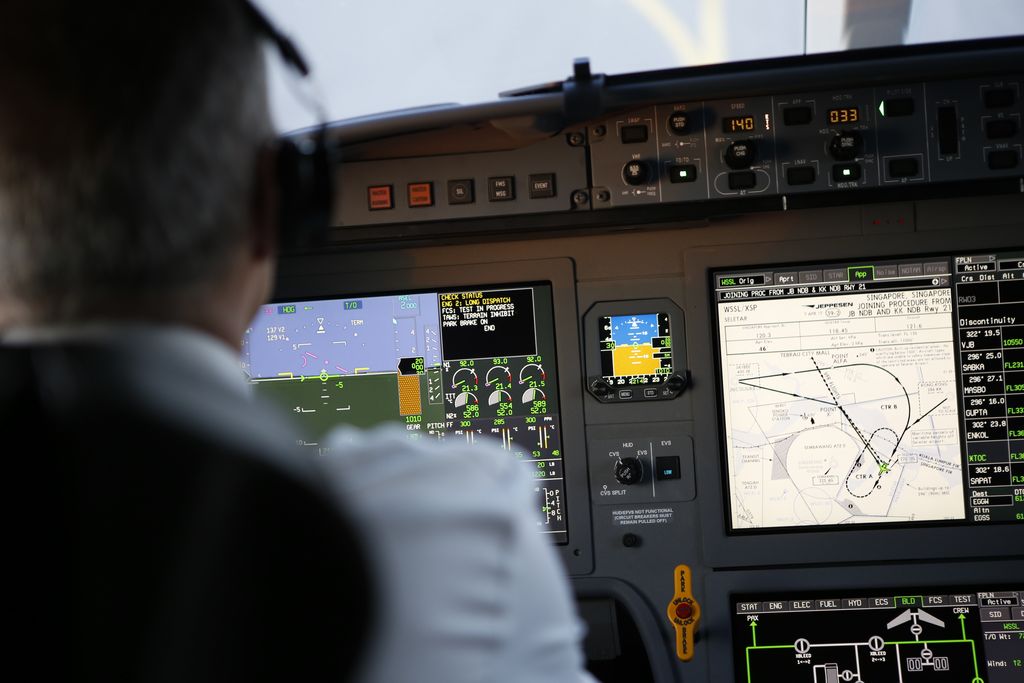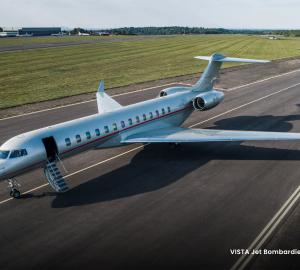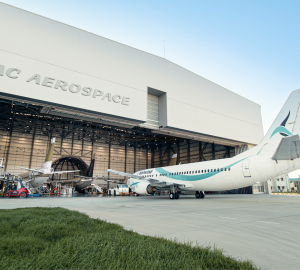Safety Check
Fasten your seatbelt and let’s take a look at some of the most impactful situational awareness technologies on board aircraft today.
By Jim Simon
The technological advances in aircraft safety features in recent years have been nothing short of phenomenal thanks to the integration of glass panel avionics, GPS and a number of other exciting technologies.
Although the roundup of technologies that follows is fairly standard in today’s newest business jets, if you are a passenger in an older jet you may still benefit as well thanks to a robust avionics upgrade industry. Moreover, even the most “traditional” of cockpits can be greatly enhanced through a pilot’s use of a portable tablet like the Apple iPad.
Airport Moving Map
Anyone who has heard air traffic control (ATC) issue taxi instructions at a large airport could understand the value of an airport moving map. Instructions often sound like, “Gulfstream November 7-5-5 Victor Charlie, taxi to runway 22 via alpha, sierra, cross runway 09, then hold short of runway 22 at bravo.”
An airport moving map clearly conveys to pilots where they are located on the airport so that they can execute the taxi clearance as directed by the airport ground controller.
As the aircraft approaches an active runway, pilots will be forewarned via audible alerts such as, “approaching runway 09!” This feature alone, is a lifesaver as runway incursions often have tragic consequences.
Enhanced Vision
Taxiing and flying in low visibility such as during nighttime or foggy conditions can be dangerous. Enhanced vision sees through fog and effectively turns nighttime into daytime using infrared wavelengths. As a result, pilots can see ahead of the aircraft using their LCDs or head-up display (more below) when pilots otherwise could not see well out of the cockpit window.
In the air, enhanced vision helps see through clouds and identify runway lights in congested areas. On the ground, common obstructions that can be avoided include wildlife, maintenance personnel such as those clearing snow, and other aircraft.
Synthetic Vision
If you have ever seen a flight simulator, you are familiar with the use of computer graphics to depict what pilots would see through the cockpit windows on a clear day.
Synthetic vision, first developed by NASA, helps pilots in many ways ranging from confirmation that the pilots have lined up on the correct runway for takeoff to depiction of obstructions such as radio towers and mountains.
If the synthetic vision system calculates that an obstacle may be a safety factor, the synthetic vision system will aggressively alert the pilots with visual cues as well as aural alerts such as, “caution, too low, terrain, pull up, pull up!”
While a passenger should hope to never hear such a warning from the cockpit during flight, it is common to hear this warning during pre-flight preparations as the system undergoes a self-check so there is no need for alarm.
Once an aircraft begins its takeoff role, the inflight moving map plays a key role in increasing situational awareness. Pilots rely upon moving maps that leverage glass panel avionics, GPS and databases, to depict an aircraft’s location relative to upcoming waypoints and airport approaches.
Most moving maps are able to overlay additional information such as radar images of weather and other aircraft. Some weather data is downloaded from air traffic control or third-party services while some weather may be derived from onboard radar. The newest generation of weather data can even show the weather from a vertical perspective, further enhancing situational awareness.
Viewing other traffic in the vicinity of one’s flight can be a lifesaver by preventing in-air collisions. Technology such as TCAS (traffic collision avoidance system) can even instruct pilots how to take emergency action to avoid other aircraft.
Head-up Display
When pilots are flying an approach under instrument flight rules (IFR), they are authorised to descend to prescribed altitudes at specific fixes (locations) by which time visual contact with the runway is required or the approach must be aborted and a go- around initiated.
As pilots operating in low visibility conditions approach the decision height for continuing or aborting an approach, pilots traditionally have had to stop viewing their cockpit instruments to look outside for a sign of the runway; then return their gaze to their instruments, and back outside. Each cycle takes a moment for a pilot’s eyes to adjust.
This is where the head-up display comes in. Pilots look outside through a head-up display glass visor. Depicted within the glass visor are the key flight parameters that pilots normally rely upon such as airspeed, altitude, pitch, and instrument landing system (ILS) indicators. The head up display may even integrate enhanced vision (covered earlier) to provide a view through clouds and fog.
Layers of Safety
The aforementioned technologies are but a few of those in operation aboard aircraft today. Taken together, they help pilots increase situational awareness and reduce fatigue, which ultimately results in enhanced safety for passengers. As the saying goes, the most dangerous part of the journey is the car ride to and from the airport.







